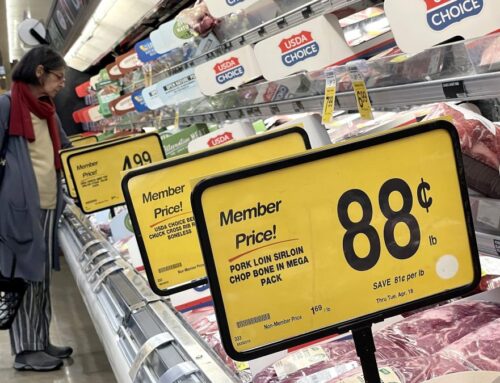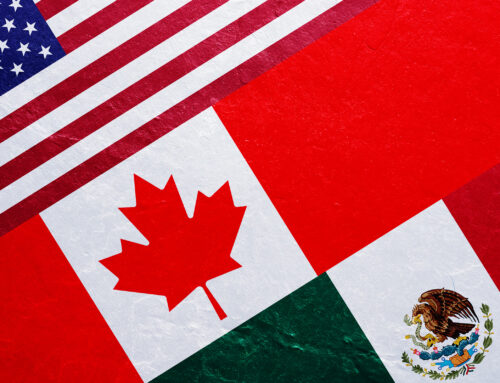The restaurant industry is currently facing a challenging landscape as soaring food prices and inflation have softened demand across the sector. As consumers become more price-sensitive, many are turning away from fast-food chains in favor of preparing meals at home or choosing healthier dining options, even if they cost slightly more. This shift has put additional pressure on restaurants, forcing them to adopt aggressive promotional strategies to attract customers and maintain profitability. However, these tactics often lead to price wars, which can be detrimental to the industry in the long run.
The Current Market Landscape
The restaurant industry is grappling with a shrinking market and decreased demand. According to a study by Nasdaq , millennials are increasingly favoring bulk shopping at retailers like Costco and Walmart, reflecting a broader trend of budget-conscious consumers prioritizing value. This shift in shopping habits has compelled restaurants to enhance their promotions to drive foot traffic and sales. However, the result is often a price war, where businesses continually lower prices (and profits) to gain market share.
While reducing prices might offer a temporary boost in demand, it comes with long-term consequences. Price wars can erode long-term profit margins, destabilize the market, and ultimately harm the financial health of businesses involved. As competitors respond by lowering their prices further, the entire industry can enter a downward spiral that becomes unsustainable.
Recent data shows that Americans have spent more of their income on food over the past two years than they have in three decades. Food prices have become a hot-button issue on the campaign trail as U.S. presidential candidates and other politicians debate economic issues ahead of the upcoming elections. Kraft Heinz Chief Executive Carlos Abrams-Rivera noted, “We had 3% inflation this year. We’re only pricing 1%,” highlighting the delicate balance between maintaining profitability and keeping consumer prices in check [source].
Food Firm Fortunes
Interestingly, despite the challenges posed by rising costs, many major food and restaurant companies have reported strong profits in recent years. Last fiscal year, each of the ten largest U.S. restaurant chains by market value posted profits that met or surpassed 2019 levels. Chains such as Chipotle Mexican Grill and Darden Restaurants’ Olive Garden reported profit margins that matched or exceeded pre-pandemic levels. Similarly, big food manufacturers like Hershey, Mondelez International, General Mills, and Kraft Heinz saw significant increases in annual net profits from 2019 to 2023 [source].
This profitability can be attributed to the companies’ ability to navigate high costs through pricing power and efficiency improvements. While many food companies have scaled back costly pandemic-era measures and invested in automation and technology to reduce expenses, they have also faced criticism for maintaining high profit margins while household budgets tighten.
The Complications of Price Wars
Price wars are notoriously challenging because they prioritize short-term gains at the expense of long-term profitability. When restaurants engage in price wars, they often overlook the importance of maintaining healthy profit margins, which are crucial for sustaining operations. As businesses slash prices, they risk alienating loyal customers who may perceive lower prices as indicative of inferior quality.
Moreover, price wars can lead to a “race to the bottom” scenario, where competitors continuously undercut each other to maintain market share. This cycle can be damaging, especially for smaller businesses that lack the financial resources to compete with larger chains. As a result, many restaurants find themselves trapped in a cycle of diminishing returns, where profitability becomes increasingly elusive.
Developing an Effective Promotion Strategy
To navigate the complexities of a softening market and avoid the pitfalls of price wars, restaurants must adopt a strategic approach to promotions. The key lies in understanding product elasticity and tailoring promotions to meet customer needs without provoking competitive responses.
Key Strategies for Success
- Identify Elastic Products: Focus on identifying products with high elasticity, meaning those whose demand is sensitive to price changes. By targeting these products for promotions, you can maximize their impact without sacrificing profitability.
- Create Targeted Promotions: Develop promotions that resonate with your target audience. Family meal deals, for example, can attract larger groups and increase overall sales volume. Encouraging customers to spend more during each visit can boost revenue without resorting to drastic price cuts.
- Leverage Customer Loyalty: Encourage repeat visits from current customers by offering loyalty programs or incentives. By fostering a sense of loyalty, restaurants can maintain a steady stream of business even when demand is softening.
- Promote Value Over Price: Instead of engaging in price wars, emphasize the value your restaurant offers. Highlight unique menu items, exceptional service, or a memorable dining experience to differentiate your brand from competitors.
- Monitor Competitor Activity: Keep a close eye on competitor pricing strategies and adjust your promotions accordingly. By staying informed about market trends, you can make informed decisions that minimize the risk of provoking a price war.
- Use Advanced Data Analytics: Utilize advanced data analytics to identify peak demand times and optimize promotional pricing strategies accordingly. Understanding when demand is highest allows for targeted promotions that maximize impact without unnecessary price reductions.
- Leverage Pricing Science: Employ pricing science to develop promotions that maximize customer spend without triggering competitive responses. This involves analyzing customer behavior and tailoring promotions to encourage higher spending.
- Conduct Value Research: Conduct value research to understand customer willingness to pay and tailor promotions to highlight perceived value. By aligning promotions with customer expectations, restaurants can enhance the overall dining experience and encourage repeat business.
Industry Examples
Domino’s Pizza CEO Russell Weiner recently acknowledged that the restaurant industry did not possess the pricing power they initially believed. Domino’s raised prices less than competitors and slower than the overall rate of restaurant inflation, showing that strategic restraint can be advantageous. Additionally, McDonald’s and Burger King have launched limited-time meal deals, and Sonic has introduced a permanent $1.99 menu. These strategies aim to attract cost-conscious consumers while maintaining value perception. [source].
Case Study: QSR
While not directly related to price wars, this QSR case study demonstrates the importance of strategic pricing. Our client, a billion-dollar Restaurant Chain, successfully leveraged data analytics to optimize pricing and promotions for their food offerings. By focusing on customer preferences and purchasing behavior, our client was able to increase sales without resorting to aggressive price cuts. [Read more].
The Influence of Inflation on Price Wars
Inflation and rising costs have a significant impact on the restaurant industry, contributing to the softening demand and increasing the likelihood of price wars. As businesses grapple with higher expenses, they may be tempted to lower prices to attract cost-conscious consumers. However, this approach is rarely sustainable in the long run.
Instead of engaging in price wars, restaurants should focus on creating value through strategic promotions and understanding the dynamics of product elasticity. By emphasizing quality, value, and customer experience, businesses can differentiate themselves from competitors and maintain profitability.
The Takeaway
Navigating the challenges of a softening market requires a careful and strategic approach. To avoid falling into the trap of price wars, restaurants must prioritize value over price and develop promotions that resonate with their target audience. By leveraging data analytics and focusing on product elasticity, businesses can identify opportunities for growth without sacrificing profitability.
Contact Us
At Iris Pricing Solutions, we specialize in helping businesses combat price wars and develop effective pricing strategies. Our team of experts can assist your organization in identifying which products or services can be discounted without inciting competitive responses. By creating personalized pricing strategies and targeted promotions, we can help you achieve your financial goals while maintaining profitability in a challenging market.





